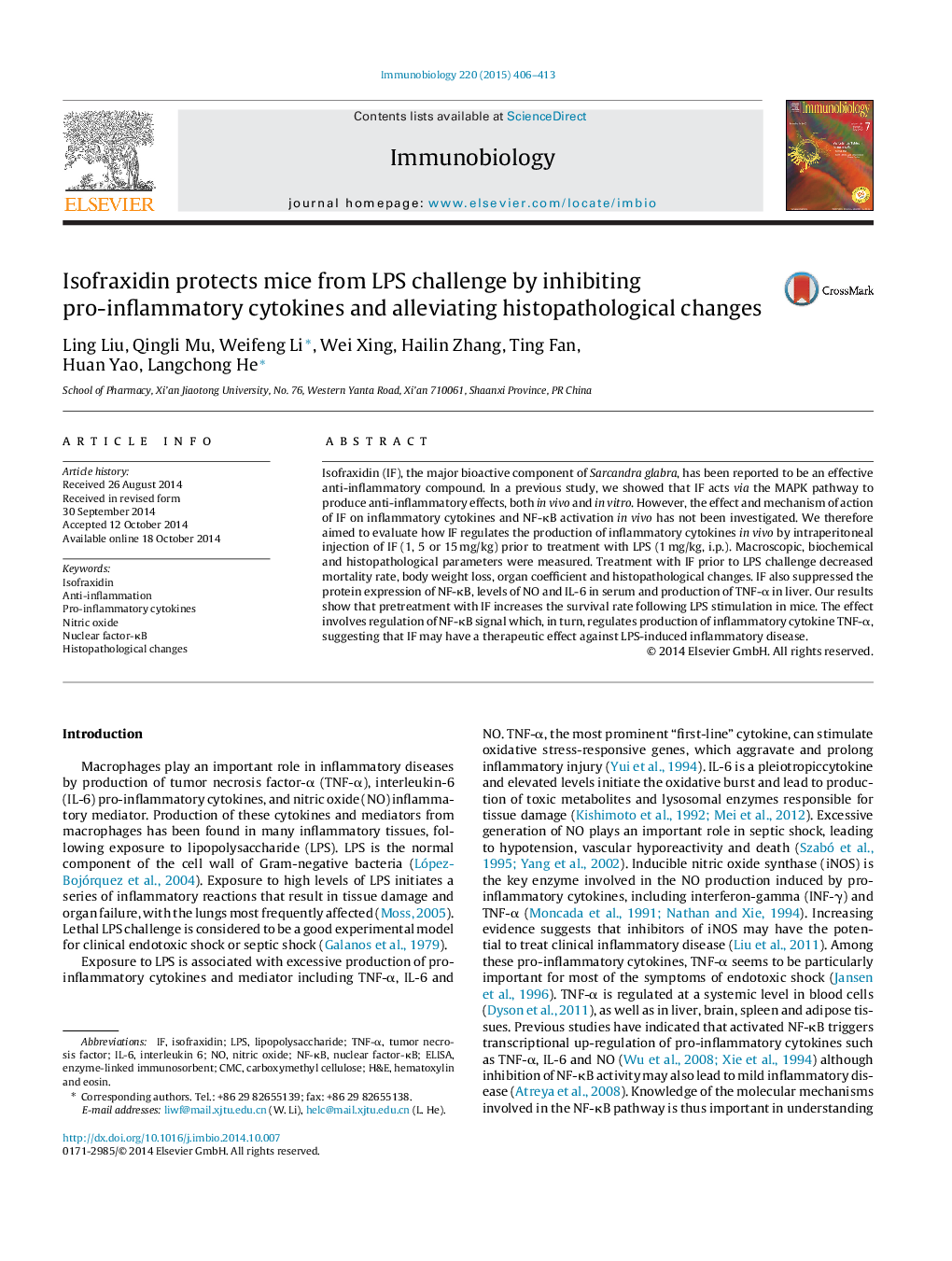| Article ID | Journal | Published Year | Pages | File Type |
|---|---|---|---|---|
| 2182865 | Immunobiology | 2015 | 8 Pages |
•IF decreased the level of TNF-α, IL-6 and NO after LPS stimulation in mice.•IF inhibited inflammatory cytokine TNF-α in liver by suppressing NF-κB activation.•IF attenuated organ coefficient and histopathological changes in heart, liver and lung.
Isofraxidin (IF), the major bioactive component of Sarcandra glabra, has been reported to be an effective anti-inflammatory compound. In a previous study, we showed that IF acts via the MAPK pathway to produce anti-inflammatory effects, both in vivo and in vitro. However, the effect and mechanism of action of IF on inflammatory cytokines and NF-κB activation in vivo has not been investigated. We therefore aimed to evaluate how IF regulates the production of inflammatory cytokines in vivo by intraperitoneal injection of IF (1, 5 or 15 mg/kg) prior to treatment with LPS (1 mg/kg, i.p.). Macroscopic, biochemical and histopathological parameters were measured. Treatment with IF prior to LPS challenge decreased mortality rate, body weight loss, organ coefficient and histopathological changes. IF also suppressed the protein expression of NF-κB, levels of NO and IL-6 in serum and production of TNF-α in liver. Our results show that pretreatment with IF increases the survival rate following LPS stimulation in mice. The effect involves regulation of NF-κB signal which, in turn, regulates production of inflammatory cytokine TNF-α, suggesting that IF may have a therapeutic effect against LPS-induced inflammatory disease.
Graphical abstractFigure optionsDownload full-size imageDownload as PowerPoint slide
